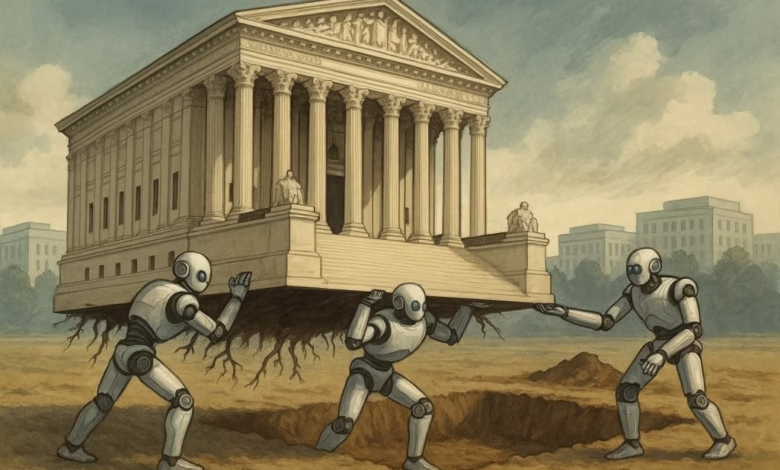AI Forces Institutions to Evolve, Just Like Humans

▼ Summary
– VB Transform is a long-standing event for enterprise leaders to discuss AI strategy, highlighting its importance in reshaping institutions and industries.
– AI is challenging traditional institutions (schools, governments, corporations) to rethink their purpose and adapt as machines take on cognitive tasks like reasoning and decision-making.
– Institutions face systemic pressures beyond AI, including declining public trust and alternative models, forcing them to evolve or risk irrelevance.
– Early examples of institutional adaptation include AI-driven education models and government tools, but deeper structural reinvention is needed for long-term relevance.
– Future-proof institutions must prioritize responsiveness, human-centered AI integration, and ethical human oversight to maintain trust and societal coherence.
The rapid advancement of artificial intelligence is forcing organizations worldwide to rethink their purpose and adapt to a shifting landscape. Schools, governments, corporations, and civic systems, once designed for stability, now face unprecedented pressure to evolve. These institutions must redefine their roles in an era where machines increasingly handle tasks once reserved for human expertise.
Traditional structures built for predictability and centralized authority are struggling to keep pace. AI now performs complex functions like legal analysis, data interpretation, and even teaching, challenging the very foundations of institutional relevance. Meanwhile, public trust in long-standing systems continues to erode, compounded by political polarization and economic inequality. The rise of AI doesn’t just automate tasks—it accelerates institutional disruption, demanding faster adaptation than ever before.
Some organizations are already testing new models. In Arizona, a charter school called Unbound Academy uses AI to deliver personalized lessons, allowing teachers to focus on mentorship rather than content delivery. Similarly, a Nigerian after-school program employing AI tutors reported students achieving nearly two years of learning in just six weeks. Governments are also experimenting, deploying AI to streamline public inquiries and sentiment analysis while reserving human judgment for high-stakes decisions.
Yet these early efforts remain fragmented. The deeper challenge lies in moving beyond pilot programs to full-scale reinvention. Institutions must balance efficiency with ethical considerations, ensuring AI enhances rather than replaces human roles. Some experts warn of massive job displacement, with AI potentially eliminating half of entry-level white-collar positions within years. Others argue that, as with past technological shifts, new roles will emerge, though the transition may be turbulent.
To thrive, institutions must embrace core design principles for the AI era:
- Prioritize adaptability over rigid hierarchies. Real-time responsiveness and data-driven insights should replace slow-moving bureaucratic processes.
- Use AI to augment, not replace, human capabilities. Automate repetitive tasks to free up people for creative problem-solving, ethical deliberation, and relationship-building.
- Preserve human oversight where it matters most. Critical decisions involving ethics, justice, and public welfare must remain firmly in human hands.
The future belongs to institutions that evolve with intention. Rather than resisting change, they must rediscover their purpose—serving as anchors of trust in an increasingly automated world. The most resilient organizations will be those that leverage AI while doubling down on uniquely human strengths: empathy, moral reasoning, and long-term stewardship.
This transformation isn’t optional. Institutions that fail to adapt risk irrelevance, leaving society vulnerable to instability. The challenge now is not just to integrate AI but to reimagine governance, education, and enterprise in ways that uphold human dignity amid rapid technological change. The path forward demands bold leadership—and a commitment to building systems that serve people, not just efficiency.
(Source: VentureBeat)





